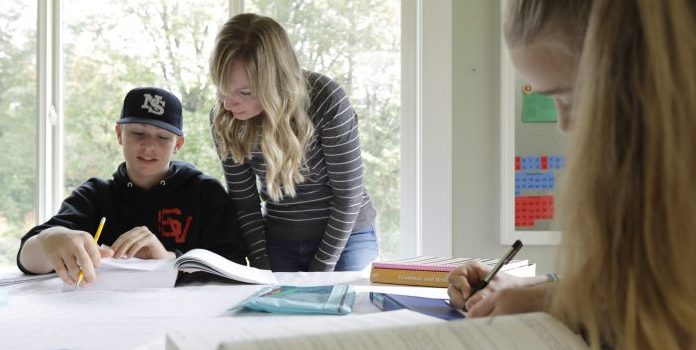(Associated Press) The rate of households homeschooling their children doubled from the start of the pandemic last spring to the start of the new school year last September, according to a new U.S. Census Bureau report released this week.
Last spring, about 5.4% of all U.S. households with school-aged children were homeschooling them, but that figure rose to 11% by last fall, according to the bureau’s Household Pulse Survey.
The survey purposefully asked the question in a way to clarify that it was inquiring about genuine homeschooling and not virtual learning through a public or private school, the Census Bureau said.
Before the pandemic, household homeschooling rates had remained steady at around 3.3% through the past several years.
“It’s clear that in an unprecedented environment, families are seeking solutions that will reliably meet their health and safety needs, their childcare needs and the learning and socio-emotional needs of their children,” the report said.
Nearly half of the nation’s elementary schools were open for full-time classroom learning as of last month, but the share of students learning in-person has varied greatly by region and by race, with most nonwhite students learning entirely online, according to results released Wednesday from a national survey conducted by the Biden administration.
Like the school openings, homeschooling differed by race and region, with the report attributing variations to local rates of coronavirus infections and local decisions about how school was being conducted during the pandemic.
Black households saw the largest jump in rates of homeschooling, going from 3.3% in the spring to 16.1% in the fall.
The rate for Hispanic households of any race went from 6.2% to 12.1%.
It went from 4.9% to 8.8% for Asian households, and from 5.7% to 9.7% for non-Hispanic white households.
Some states saw bigger jumps than others.
Alaska went from 9.6% of households to 27.5% of households.
In Florida, the rate jumped from 5% to 18.1%, and it grew in Vermont from 4.1% to 16.9%.
Among the nation’s largest metro areas, Detroit, Phoenix and Boston had the largest increases.
The Household Pulse Survey was created by the Census Bureau last year to provide real-time data on the effect of the new coronavirus on the lives of U.S. households.

